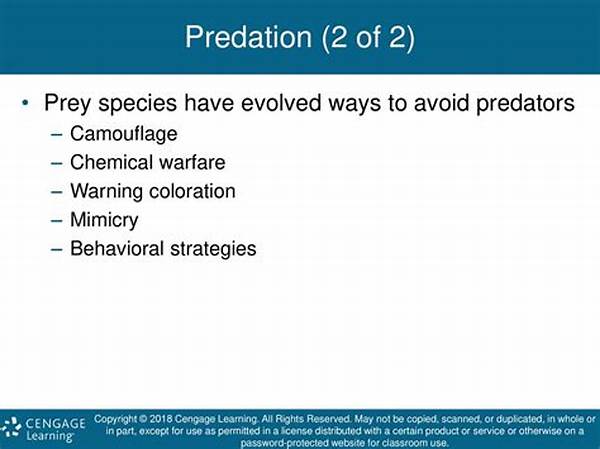The environmental impact of warfare on species presents an urgent environmental concern that has garnered increasing attention from scientists and policymakers. Warfare, throughout history, has not only altered human societies but also left a destructive imprint on natural ecosystems, profoundly affecting diverse species. As the modern world faces numerous conflicts, understanding the intersection between warfare and environmental degradation becomes essential. This article aims to explore the multifaceted effects warfare has on biodiversity and habitats, underlining the need for proactive measures to mitigate such impacts.
Habitat Destruction and its Consequences
The environmental impact of warfare on species is often most evident in the form of habitat destruction. When military actions, such as bombing and landmines, take place, vast expanses of habitats are obliterated, leaving species vulnerable. The disruption of ecosystems results in loss of shelter and resources for many organisms. In war-torn regions, deforestation and the complete upheaval of landscapes contribute to the permanent loss of biodiversity. This destruction affects not only the immediate area but also hinders ecosystems’ overall ecological functions, leading to a domino effect of declining species populations and increased extinction risks. Addressing these issues requires a comprehensive understanding of the long-term repercussions as well as strategic efforts to rehabilitate affected environments.
Chemical Warfare and Toxic Contamination
1. The environmental impact of warfare on species includes the introduction of toxic chemicals into ecosystems. Persistent pollutants cause long-term ecological harm.
2. Chemical warfare leaves lasting traces in the soil and water, affecting flora and fauna. Contaminants disrupt species reproduction and growth.
3. Toxins from explosives and weapons alter ecosystem dynamics, leading to population declines. This impacts species at every trophic level.
4. Chemical residues from warfare reduce the fertility of land, impeding the growth of plant species that other organisms depend on for survival.
5. The presence of hazardous substances in ecosystems due to warfare necessitates immediate environmental remediation to safeguard affected species.
Displacement and Migration Patterns
Another critical aspect of the environmental impact of warfare on species involves the displacement and alteration of migration patterns. Warfare disrupts the natural geography of regions, forcing species to flee from conflict zones in search of new habitats. This displacement disturbs natural migration routes that have been established over millennia. The fragmentation of habitats due to military activities intensifies these displacement issues, leading to increased competition for resources in new territories. Species that are unable to adapt quickly enough face heightened risks of decline or extinction. Therefore, assessing the impact on migration and ensuring the preservation of natural corridors becomes vital to sustaining biodiversity amidst conflict-related disruptions.
Long-Term Ecological Impacts and Recovery
Understanding the long-term ecological impacts and recovery strategies is crucial when evaluating the environmental impact of warfare on species. Prolonged military conflict erodes the capacity of ecosystems to regenerate naturally. The soil, water, and air quality in affected areas deteriorate, hampering the recovery of flora and fauna. Rebuilding these ecosystems necessitates concerted efforts to remove physical and chemical remnants of warfare. Engaging rehabilitation programs focused on reforestation, soil restoration, and the reintroduction of native species can aid in the renewal process. International cooperation and dedicated funding are necessary to see through these rehabilitation efforts, ensuring they sustain over time.
Human-Wildlife Conflict in War Zones
The environmental impact of warfare on species extends beyond direct habitat damage, influencing human-wildlife interactions in war zones. As military activities encroach on wildlife territories, the probability of conflict between humans and animals rises. Animals seeking refuge from human threats often intrude into human settlements, resulting in negative encounters. Furthermore, the loss of natural barriers and resources exacerbates this delicate balance, creating a contentious interface between survival needs and security concerns. Enhancing understanding and devising peaceful coexistence strategies are vital to reducing these conflicts, safeguarding both human and wildlife populations in unstable regions.
Military Impact on Aquatic Ecosystems
Aquatic ecosystems also suffer significantly from the environmental impact of warfare on species. Explosions near water bodies can drastically alter water chemistry and temperature, adversely affecting aquatic life. Debris and pollutants from warfare can lead to water contamination, impairing the health of aquatic organisms and threatening the biodiversity within these habitats. The disruption of breeding grounds and migration routes further endangers aquatic species. Hence, preserving aquatic ecosystems requires targeted efforts to prevent and mitigate pollution while restoring natural conditions.
Conclusion and Mitigation Strategies
In conclusion, the environmental impact of warfare on species is extensive and multifaceted, manifesting through habitat destruction, chemical contamination, and altered migration patterns. The long-lasting ecological damage emphasizes the importance of implementing robust mitigation strategies. Proactive international policies aimed at minimizing environmental damage during conflicts and promoting ecological restoration post-conflict are imperative. Cooperation among nations, scientists, and environmental organizations can drive the development of sustainable practices to protect biodiversity amid warfare. As global attention focuses more on environmental conservation, addressing the impacts of warfare on species is an essential aspect of ensuring the resilience of ecosystems for future generations.





